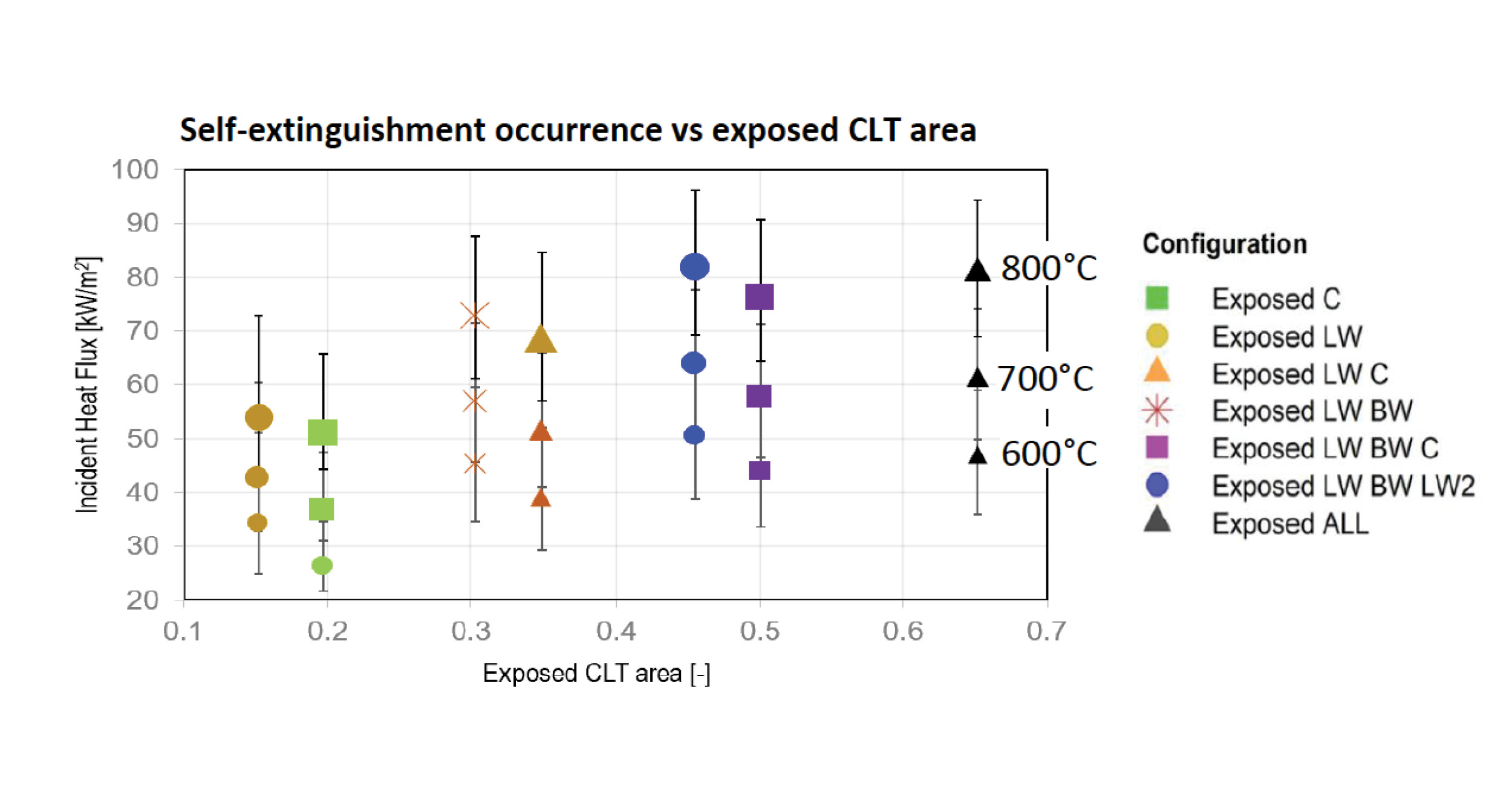- Approach 1: CLT wall with a constant temperature and null HRRPUA
- Approach 2: CLT wall with an adiabatic condition and a constant HRRPUA
Approach 3: CLT wall with a constant temperature and a constant HRRPUA

Figure 1. Comparison of thermal feedback on CLT at different surface temperatures (different marker sizes) and 63 kW/m2 HRRPUA.
From the three approaches, the third approach reaches conclusions regarding self-extinction that approximate better the experimental findings by (Gorska, 2020). The first approach appears to underestimate the thermal feedback significantly for large CLT exposure, whereas the third approach provides a significant overestimation for all scenarios. This confirms that a combustion model is necessary. Therefore, it was found that a specific case where the CLT wall with a constant temperature of 700°C and HRRPUA of 63 kW/m2 was the most suitable approach to assess self-extinction. However, it is discussed that a better approach could be considered based on constant net heat flux to the timber and a constant HRRPUA. When developing this analysis, the time scales to achieving burnout are ignored such that delamination can be neglected in the analysis. The approach developed by Sahoo (Sahoo, 2020) – who is a key member of Sotera’s Gold Coast fire engineering team – has the potential to be used as a conservative tool to design the CLT compartment for self-extinction.
For more feel free to Contact us today at any of our offices in Brisbane or Gold Coast.

